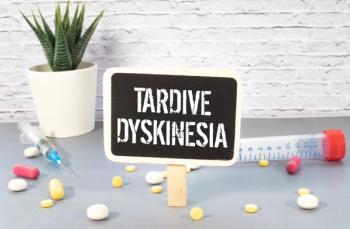
Update on Using Dextromethorphan-Bupropion in Depression
A new—cough, cough—combination treatment for depression. Researchers performed an RCT of dextromethorphan-bupropion in major depressive disorder.
Research Update
Partial or inadequate response to antidepressants—whose mechanisms primarily involve monoamine pathways—are common.1,2 Multiple lines of evidence suggest that the glutamatergic system is also involved in the pathophysiology of depression. Dextromethorpahn is a N-methyl-D-aspartate receptor antagonist and a sigma-1 receptor agonist, both of which modulate glutamate neurotransmission. The clinical utility of dextromethorphan is limited by extensive CYP2D6 metabolism.3 AXS-05, an oral tablet that combines dextromethorphan and bupropion, is formulated to increase the bioavailability and half-life of dextromethorphan through inhibition of its metabolism by bupropion, and is under development for the treatment of major depressive disorder (MDD).
The Current Study
Tabuteau and colleagues4 performed a phase 2, 6-week randomized double-blind active-controlled trial of AXS-05 in MDD at 4 sites in the US. They specifically used confirmation of disease severity through independent assessment and comprehensive blinding of trial sites to address factors that may contribute to poor signal detection in clinical trials.5 They included patients aged 18-65 with DSM-5 MDD and a current moderate or severe major depressive episode. Subjects had a score ≥ 25 on the Montgomery-Åsberg DepressionRating Scale (MADRS) and a score ≥ 4 on the ClinicalGlobal Impressions severity scale (CGI-S). Exclusion criteria were bipolar disorder, panic disorder, OCD, treatment-resistant depression (≥ 2 failed antidepressant trials in the current episode), substance use disorder in the past year, lifetime history of psychotic disorder, clinically significant suicide risk, and history of seizure disorder. Participants were randomized 1:1 to either dextromethorphan-bupropion (45 mg/105 mg) or bupropion (105 mg) once daily for 3 days then twice daily thereafter.
The primary efficacy variable was the change from baseline to week 6 in the MADRS total score. Secondary endpoints were clinical response (≥ 50% reduction in MADRS total score) or remission (MADRS total score ≤ 10), CGI-S and CGI-Improvement scores, scores in the 16-item Quick Inventory of Depressive Symptomatology-Self-Rated (QIDS-SR), and MADRS-6 score. Study patients also tracked their mood daily with a visual analogue mood scale. The study safety population included all patients who received at least 1 dose of study medication. The efficacy population included all patients with illness severity confirmed by the independent assessor who were randomized, received at least 1 dose of study medication, and had at least 1 postbaseline assessment. Efficacy variables assessing a change from baseline were analyzed using mixed models with repeated measures. Those efficacy variables related to percentages were analyzed by chi-square tests.
The authors randomized 97 patients, of whom the independent assessment failed to confirm diagnosis or severity for 17 patients, resulting in 80 patients. Seventy-four of the 80 patients completed the trial. Mean treatment adherence was > 90% in both groups based on tablet counts. There were nonsignificantly more women, Black or African American, and Hispanic or Latino patients in the bupropion group (p > 0.15 for each). Dextromethorphan-bupropion was associated with significantly greater reduction in MADRS scores versus bupropion (-13.7 versus -8.8 points, effect size = 1.2), with statistically significant differences beginning at week 2. Response (60.5% versus 40.5%) and remission (46.5% versus 15.2%) at week 6 was significantly more likely in the dextromethorphan-bupropion group. Dextromethorphan-bupropion was also associated with significantly greater improvement on the CGI-S scale (-1.6 versus -1.0). The prevalence of any adverse events was 73% in the dextromethorphan-bupropion group and 65% in the bupropion group. The most common adverse events in the dextromethorphan-bupropion group were dizziness, nausea, dry mouth, decreased appetite, and anxiety. There were no serious adverse events in the trial. Dextromethorphan-bupropion was not associated with psychotomimetic effects, weight gain, sexual dysfunction, increased suicidality, or significant changes in laboratory parameters and vital signs.
Study Conclusions
The authors concluded that AXS-05 showed rapid, substantial, and statistically significant antidepressant efficacy compared to the active comparator on multiple clinician- and patient-reported measures of depression severity. A primary strength was the use of bupropion (at an identical dose to AXS-05) as the active comparator. Study limitations include exclusion of patients with lower levels of symptom severity and other psychiatric or medical comorbidities. Thus, findings from efficacy trials may not be mirrored in general practice. Another limitation is the short duration of the trial (6 weeks).
The Bottom Line
This study demonstrates that dextromethorphan-bupropion significantly improves depressive symptoms compared to bupropion and was generally well tolerated. This combination represents a novel pharmacologic approach to the treatment of MDD.
References
1. Machado-Vieira R, Henter ID, Zarate CA Jr.
2. Fava M, Kendler KS.
3. Pope LE, Khalil MH, Berg JE, et al.
4. Tabuteau H, Jones A, Anderson A, et al.
5. Freeman MP, Pooley J, Flynn MJ, et al.
Newsletter
Pharmacy practice is always changing. Stay ahead of the curve with the Drug Topics newsletter and get the latest drug information, industry trends, and patient care tips.











































































































































































































